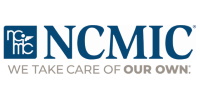CIGNA Signs Agreement to Deliver Fair Rates to Patients Nationwide; Will Contribute $10 Million to New, Independent Database Cuomo Also Announces Intent to Sue Rochester-Based Excellus for Defrauding Consumers by Manipulating Rates, Relying on Outdated Information Attorney General Andrew M. Cuomo today announced further expansion of his historic reform of the national healthcare reimbursement system. Cuomo has reached an agreement with CIGNA (NYSE: CI), one of the nation’s ten largest health insurers, in his ongoing drive to end industry-wide conflicts of interest and generate fair reimbursement rates for working families nationwide. CIGNA will end its relationship with the defective Ingenix database, as well as pay $10 million to a qualified nonprofit organization that will establish a new, independent database to help determine fair out-of-network reimbursement rates for consumers. The agreement today with CIGNA brings the total dollar amount secured by Attorney General Cuomo for the new database to over $80 million. Attorney General Cuomo also announced that his office has served a five-day notice of intent to sue Excellus Health Plan (“Excellus”) for defrauding consumers and patients across Upstate New York by manipulating reimbursement rates for out-of-network services. Rochester-based Excellus is the largest not-for-profit insurer in New York State, and is the largest insurer in the Rochester and Syracuse areas. Excellus and its affiliates serve nearly two million people in 31 counties, with approximately 872,000 members in Rochester, 549,000 in Syracuse and Central New York, 289,000 in Utica, and 165,000 in Buffalo, where it operates as Univera Healthcare (“Univera”), one of the Buffalo area’s three largest insurers. Cuomo's case against Excellus includes information provided by the Syracuse Post-Standard newspaper showing that Excellus was under-reimbursing the Post-Standard's employees, who were members of Excellus. “Today’s agreement with CIGNA is the latest domino to fall in our industry-wide sweep of the healthcare reimbursement system and brings us another step closer to complete reform,” said Attorney General Cuomo. “Unfortunately, on the same day, we have another company that has continued to stand squarely in the way of our efforts. The bottom line is that Excellus failed to satisfy promises made to its members to deliver fair rates and give patients what they paid for. Let this notice today serve as a firm reminder to other insurers who have not yet resolved this problem - we will not hesitate to pursue legal action against companies that defraud patients.” Earlier this month, Attorney General Cuomo announced sweeping reforms to end the manipulation of reimbursement rates at the expense of patients across the country. After a year-long investigation revealed that the health insurance industry relied on a defective database to set rates, Cuomo reached groundbreaking agreements with UnitedHealth Group Inc. (“UnitedHealth”) (NYSE: UNH), the owner of the Ingenix database and the second-largest insurer in the country, along with Aetna (NYSE: AET), the nation’s third-largest health insurer. After those initial agreements, Cuomo brought his reform efforts to Upstate New York, securing agreements with the Schenectady-based MVP Health Care/Preferred Care as well as Independent Health and HealthNow, both Buffalo-based insurers. Attorney General Cuomo’s investigation concerned allegations that as a subsidiary of UnitedHealth, Ingenix had a vested interest in helping set rates low, so companies could underpay patients for out-of-network services. The investigation revealed that the database intentionally skewed “usual and customary” rates downward through faulty data collection, poor pooling procedures, and the lack of audits, meaning consumers were forced to pay more than they should have. The investigation found the rate of underpayment by insurers ranged from ten to twenty-eight percent for various medical services across the state. The Attorney General found that having a health insurer determine the “usual and customary” rate - a large portion of which the insurer then reimburses - creates an incentive for the insurer to manipulate the rate downward. The establishment of a new database, independently owned and operated by a nonprofit organization, is designed to remove this conflict of interest. Under the agreement secured with UnitedHealth, the database of billing information operated by Ingenix will close. UnitedHealth also agreed to pay $50 million to a qualified nonprofit organization that will establish a new, independent database to help determine fair out-of-network reimbursement rates for consumers throughout the United States. Cuomo’s agreement with Aetna, which will also end their relationship with Ingenix, secured another $20 million for the database. Today’s agreement with CIGNA, which insures 12 million people nationwide, brings the total dollar amount to $80 million. Under the terms of the agreement: • CIGNA will pay $10 million toward a new, independent database run by a qualified nonprofit organization; • The nonprofit will own and operate the new database, and will be the sole arbiter and decision-maker with respect to all data contribution protocols and all other methodologies used in connection with the database; • The nonprofit will develop a website where, for the first time, consumers around the country can find out in advance how much they may be reimbursed for common out-of-network medical services in their area; • The nonprofit will make rate information from the database available to health insurers; • The nonprofit will use the new database to conduct academic research to help improve the health care system; • The nonprofit will be selected and announced at a future date. Cuomo also announced today that he has served a five-day notice of intent to sue Rochester-based Excellus for defrauding consumers across the state. During the investigation into the use of the Ingenix databases, the Attorney General has uncovered a trove of e-mails pointing to an egregious scheme by Excellus to defraud its members by using obsolete fee schedules to reimburse members for out-of-network care. The investigation has found that, for at least the past fifteen years, Excellus has used years-old fee schedules to reimburse consumers for out-of-network claims, saving itself countless dollars which should have been paid to consumers. Because medical costs rise substantially every year, the use of old fee schedules hurts consumers by paying them substantially less than they are owed. For every year by which the fee schedule is outdated, the harm to the consumer is compounded. For many years, Excellus has relied on pricing information that was as much as nine years old. Furthermore, emails and other internal communications secured by the Attorney General’s Office during the investigation show that Excellus employees were aware of their outdated rates and did nothing to correct the problem or pay members what they were owed. “In some of the most egregious evidence of fraud we have seen in this investigation, these emails reveal that not only did Excellus use outdated UCR fee schedules, but it made zero effort to fix the problem and pay members what they deserved. The company’s own internal communications show total disregard for the effect their skewed rates were having on hard-working families, especially across Upstate New York where Excellus controls the lion’s share of the health insurance market,” said Cuomo. According to a 2007 market report by the American Medical Association, Excellus controls 57 percent of the Rochester market for commercial health insurance and 66 percent of the PPO (“preferred provider organization”) market there; 42 percent of the Syracuse market for commercial health insurance and 97 percent of the HMO (“health maintenance organization”) market there; 27 percent of the Binghamton market for commercial health insurance and 80 percent of the HMO market there; and 15 percent of the Ithaca market for commercial health insurance and 100 percent of HMO market there. The Attorney General’s industry-wide investigation into rate manipulation began in February 2008, when Cuomo announced that he had issued subpoenas to the nation’s largest health insurance companies that use the Ingenix database, including Aetna, CIGNA and WellPoint/Empire BlueCross BlueShield (NYSE: WLP). To date the investigation is ongoing. Jeff Kang, M.D., Chief Medical Officer for CIGNA, said: "CIGNA commends the Attorney General’s efforts to bring greater transparency to the pricing of health care services and we are pleased to partner in the creation of an independent not-for-profit organization to administer the new database. We recognize the Attorney General’s concern that there are inherent conflicts of interest related to the Ingenix database and expect that this new database will further enable people to make informed choices about their health care purchases.” Nancy Nielsen, M.D., President of the American Medical Association (AMA), said: “The American Medical Association commends CIGNA for committing today to the groundbreaking insurer settlements arranged by New York Attorney General Andrew Cuomo. In the wake of these agreements, the AMA calls upon all health insurers to reject the fatally flawed Ingenix database. Health insurers who truly recognize the importance of restoring their damaged relationships with patients and physicians should commit to the solution proposed by Attorney General Cuomo without delay.” Michael H. Rosenberg, MD, President of the Medical Society of the State of New York (MSSNY), said, “Attorney General Andrew Cuomo has taken another important step in propelling state and national healthcare reform and leveling the playing field with managed care organizations. Just a month after negotiating the first agreement, Attorney General Cuomo has managed to achieve what MSSNY and the AMA sought for more than eight years. With CIGNA joining United, Aetna, MVP, HealthNow and Independent Health - in abandoning the flawed Ingenix system - patients and physicians will now have the assurance of a viable and transparent reimbursement system for out-of-network services. At a time of great economic distress, this is a major step forward in the assurance of quality health care delivery.” Chuck Bell, Programs Director of Consumers Union, said: “Attorney General Cuomo's sweeping national investigation of the previously obscure Ingenix database has lifted the veil on this appalling financial rip-off, and created a new framework for a fair, consumer-friendly solution. Today's announcement shows that national insurers are coalescing behind a comprehensive, industry-wide strategy to reform the way that out-of-network charges are calculated, so consumers will be paid fairly.” The agreement announced today is the result of an investigation by Deputy Chief of the Health Care Bureau James E. Dering, Senior Trial Counsel Kathryn E. Diaz, and Assistant Attorneys General Brant Campbell and Sandra Rodriguez, under the direction of Linda A. Lacewell, the head of the Attorney General’s Healthcare Industry Taskforce. In January, Cuomo also issued a report on his investigation, “Health Care Report: The Consumer Reimbursement System is Code Blue.” The report highlights the conflicts of interest and other defects in the current system and calls for the reforms announced today. To access the report, get consumer tips for out-of-network care, or to file a complaint, please visit http://www.oag.state.ny.us.




